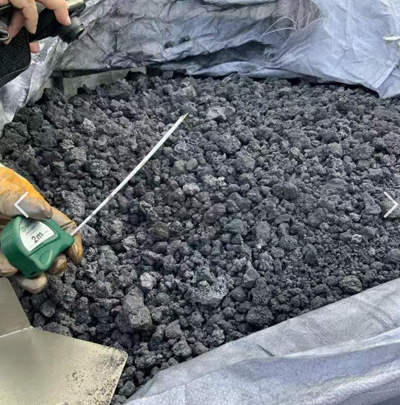
A petroleum coke quality control system is important to ensure that calcined petroleum coke (CPC) meets the required quality standards for its intended use. CPC serves many different purposes. For example, it can be used to raise the carbon content in Alumina production in aluminum melters, or as a backfill for ground electrode stations. Particle size distribution, hardgrove grinding index, and reactivity are all factors that need to be considered in order to satisfy the needs of these various applications.
The level of oxygenation in the product and the content of volatile matter (VM), for example, can have a significant impact on the reactivity. Pretreatment of the coal can affect the amount of volatile matter, while changing the temperature can influence the level oxygenation.
Using the right method for sampling calcined coke is critical for quality assurance and quality control in the smelting industry. A properly sampled sample can be used to determine the carbon, sulfur and nitrogen content of a lot of coke, and it can be compared to other lots of coke. This information can be used in commercial transactions, controlling plant operations and allocating production costs.

The sampling method used depends on the type of calcining operation, as well as the size and nature of the samples. One sample can sometimes represent an entire coke lot. The quantity of coke being analyzed may require multiple samples. The sensitivity of the test methods and the variety of calcining operations preclude a standard set of sampling procedures for collecting petcoke samples.
To test the reactivity in calcined carbon, you place a sample of calcined COKE in contact with gases containing less that 1% of free oxygen. You then measure the weight loss. This is a widely-used method in smelting to evaluate the suitability CPC material as anode in alumina furnaces.
It is important to reduce moisture in petcoke and eliminate volatile substances. The raw material is contacted with an inert, non-toxic gas like hydrogen or nitrogen. The gases increase the carbon fixation of the coke by reducing its volatility. The coke's physical properties, like its density and particle size, are also improved.
Reactivity can be decreased by treating calcined oil coke with toluene or methylene chloride. It is important to do this in order to remove dust-control materials that were applied when calcining. The dust control material is crucial to maintaining an environment free of dust while handling and transferring the product. Dust control materials can affect the quality of graphite and carbon artifacts made from coke. The reactivity of the coke can be further improved by contacting it with air.

Write a Message